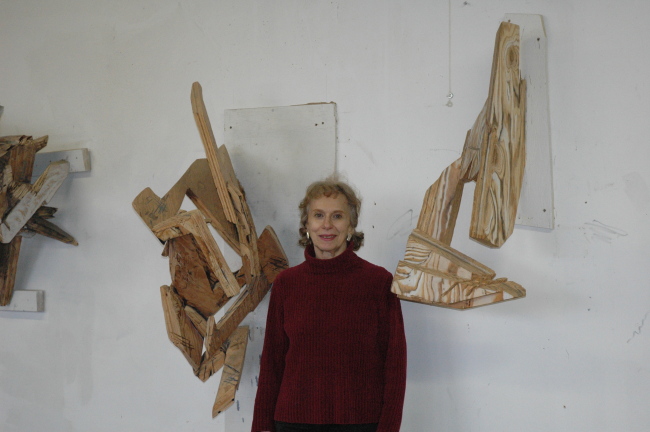Submitted by Evelyn Kiefer on Sun, 02/17/2008 - 14:30.

How can the Internet be used to preserve an artist's legacy? Can the Internet make an artist accessible to the world when their work is not exhibited in museums or found in art history books? Is art experienced through the Internet and never seen in person as meaningful and inspiring as art experienced in person? Most of the Realneo community would agree that the Internet and social networking is a useful tool in promoting artists and arts events, but what are the untapped possibilities and limitations. What role can the Internet play in preserving art for the future? As we begin the 21st century there are more artists in the world than ever before, more art work created and probably larger audiences for art as well. But with more artists and art created there is also more art being lost.
Several recent experiences have led me to ponder how the Internet might be used as a cost effective and space saving way to preserve and promote an artist's work for the future. One such experience was Wednesday afternoon February 6th, I had the pleasure of visiting the studio of local artist Gina Brand. Gina Brand is a sculptor, though I am reluctant to give her such a limiting title. On this recent visit I learned that for her entire career she has also painted and produced beautiful charcoal drawings.
Gina Brand has been part of the Cleveland arts scene for many years. A Cleveland Institute of Art graduate, she has been tirelessly producing work that is consistently high quality, both technically and aesthetically strong for many decades. Her studio is filled with works in progress, recently completed works (may of which are sold) and older works that represent her artistic development over the years. Her studio space is in an old warehouse, which I would guess was once used by Cleveland's thriving turn-of-the-century garment industry, is filled with natural light and well organized, though it is obviously the site of much artistic activity.

Gina Brand's first studio was in Little Italy, she later worked in the Buckeye Area. She was once part of a loosely associated group of local women artists who exhibited together - this group included Phyllis Sloane and Phyllis Seltzer.
For quite a few years now she has kept a studio in the burgeoning Arts Quarter China Town area -- near the Plain Dealer, Tower Press Building and numerous thriving Chinese businesses. Though her building and studio is perfect for making the large wood sculptures that have become her trademark, it is isolated from some of the more visitor friendly studio buildings right next store like the Art Craft Building and the Tower Press.
Perhaps you are fortunate enough to know Gina Brand or at least to have seen her work? The only reason I know she exists is because one of her pieces is in the Putnam Sculpture Collection at Case Western Reserve University. The piece, titled Elemental Energy is located in the lobby of the Olin Building on the quad. Although I think it is one of the strongest pieces in the Putnam Collection, it is not one most visitors to Case would ever come across. Science majors and faculty pass it often and I have heard that at least one person was strongly opposed to its presence in Olin and wanted it moved to a new location (an idea vetoed by the Putnam Collection) -- inspiring love or hatred, the sure sign of a great work of art.
Gina Brand has no Internet presence (beyond this posting) and there is little search-able printed material available about her work. Like many artists, she has no website and she has no immediate plans or ability to develop an on-line presence. As with many people of her generation the recent advances in technology (digital images, Internet communication) have left her behind. Gina Brand acknowledged that she has never made a living from her art and without the financial incentive she has spent her time making art rather than crafting a resume or other promotional materials.
Considering Gina Brands significant body of work, her age (70s I estimate) and the fact there are few people who know and support her work makes me wonder who decides which artists are important to the cannon of 20th/21st century American art and which artists just fade away? And, who's responsibility is it to make an artist's work known to the world and how can an artist's legacy be maintained outside the traditional art world realm of museums and galleries. A question to the Realneo community: how can the Internet be used to preserve an artist's legacy?